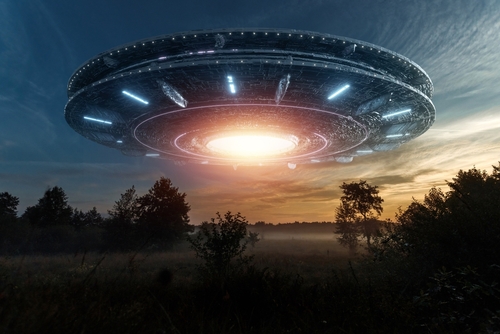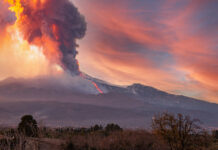
The Pentagon recently disclosed that it received 291 reports of Unidentified Flying Objects (UFOs) in the past year. This revelation sparked a renewed interest in the subject, as well as concerns over national security.
The reported UFO sightings exhibited unusual characteristics, such as high-speed travel and extraordinary maneuverability, which have raised eyebrows among defense officials.
So far, the Pentagon’s UFO investigations office, under the leadership of physicist Dr. Sean Kirkpatrick, has been actively investigating these cases.
Kirkpatrick, who previously worked with the Air Force Research Laboratory and the CIA, expressed concern that some of these UFOs might be advanced espionage drones designed by foreign adversaries to evade US radar and other detection systems.
Video Shows Incredible UFO Fleet Flying Over New Mexico
Oct 11, 2023
Here we go with another UFO sighting — and this time it’s an entire fleet.
While on a flight to Los Angeles and flying over New Mexico, an airline passenger caught on video a mysterious group of glowing lights,… pic.twitter.com/GSAWGFKz7G— 1776 (@TheWakeninq) October 12, 2023
In an interview with CNN, Kirkpatrick stated, “There are some indicators that are concerning and may be attributed to foreign activity. We are investigating those very hard.”
He further added there are ways for foreign entities to “hide in our noise,” referring to the possibility of these objects blending into the regular radar noise, making them difficult to detect.
The Pentagon’s report also highlighted the need for better data collection methods to investigate these UFOs. It emphasized the importance of integrating space-based and undersea data into their processes.
To this end, the Pentagon plans to collaborate with the US Navy, the National Intelligence Manager for Military Integration, and other agencies like NASA and the National Reconnaissance Office.
However, the report also drew attention to the issue of ‘collection bias’ and the need for standardization in the field of UFO research. The term ‘Unidentified Anomalous Phenomenon’ or UAP is now being used professionally to refer to UFOs.
The report defined ‘UAP Threat’ as any UAP that poses a national security risk to military personnel, material, or information.
– November 1896 UFO sighting. #UFOS #UFO #UFOSightings #UFOlogists #UFOlogy #UFOIncident #UFOFiles #UFOCatcher #UFOHunter pic.twitter.com/5hXMyUXrqN
— 👽🛸 (@vigonxo) October 17, 2023
Despite the Pentagon’s efforts to bring transparency to the subject, some long-time UFO researchers have expressed concerns over the increased secrecy surrounding UAP.
They pointed out difficulties in obtaining government records on UFOs through the US Freedom of Information Act (FOIA) since the creation of dedicated UAP investigative mandates within the Pentagon.
The report also revealed a hotspot map showing the locations of reported UFO sightings, including Japan and the Middle East. This information is crucial as it provides insights into the geographical distribution of these sightings.
While the Pentagon’s report brought the topic of UFOs back into the spotlight, it also raised serious questions about national security. It is clear that more research and investigations are needed to fully understand these phenomena and their potential implications for our nation’s defense.

















